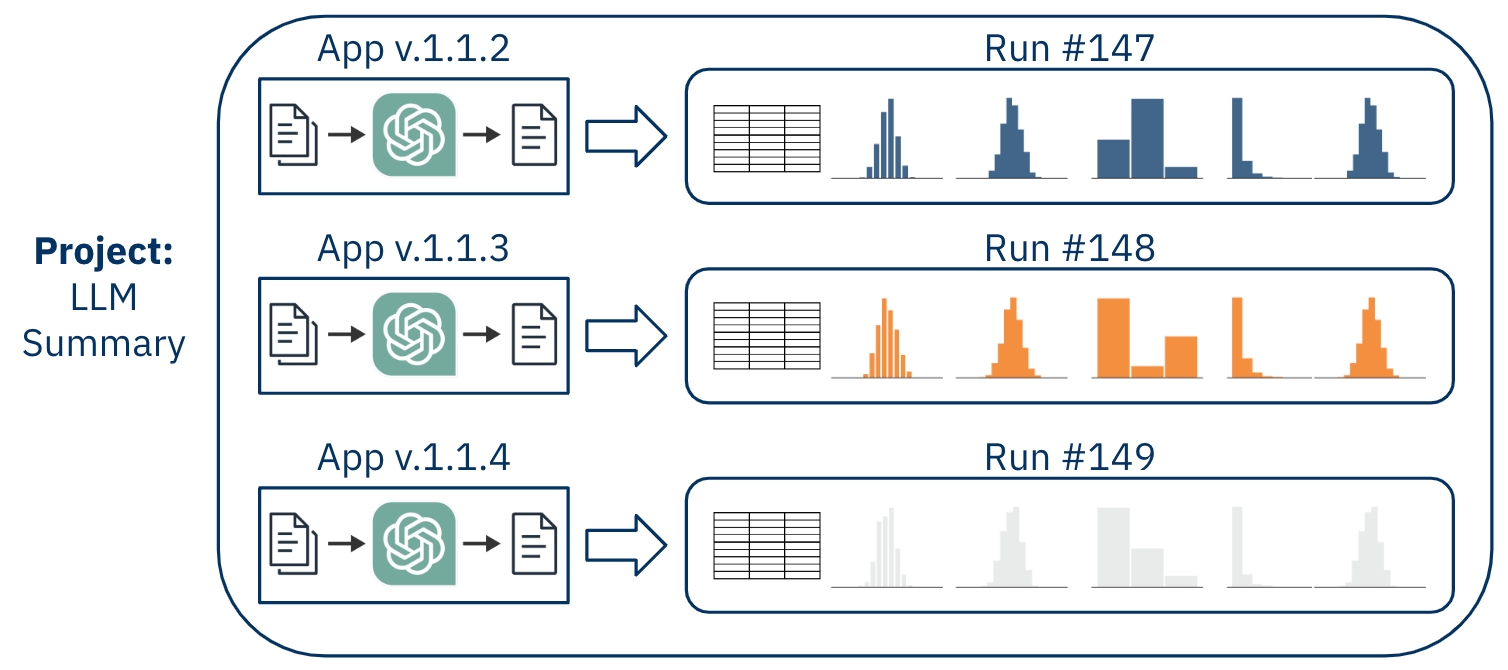The Distributional Framework
Key Distributional concepts and their role relative to your app

Distributional testing requires more information than standard deterministic testing to address the motivating bullets (nondeterminism, nonstationarity, interactions) described earlier. Each time you want to measure the behavior of the app, Distributional wants you to:
Record outcomes at all of the app’s components, and
Push a distribution of inputs through the app to study behavior across the full spectrum of possible app usage.
The inputs, outputs, and outcomes associated with a single app usage are grouped in a Result, with each value in a result described as a Column. The group of results that are used to measure app behavior is called a Run. To determine if an app is behaving as expected, you create a Test, which involves statistical analysis on one or more runs. When you apply your tests to the runs that you want to study, you create a Test Session, which is a permanent record of the behavior of an app at a given time.
Was this helpful?

